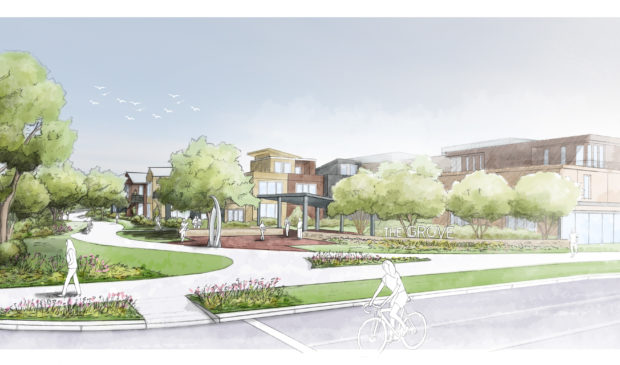Casar pushes for alternative to neighborhood deal on Grove PUD
Wednesday, December 14, 2016 by
Jack Craver The fight over the Grove at Shoal Creek, a massive mixed-use development that has sparked fierce debate in surrounding neighborhoods, may not be over after all.
A number of City Council members signaled Tuesday that they are not committed to supporting an agreement announced earlier this month between the developer, ARG Bull Creek Ltd., and the Bull Creek Road Coalition, a neighborhood group that has been campaigning to reduce the size of the development.
The agreement was that the developer would provide 25 percent more affordable housing units and reduce the office and retail space in the development by 25,000 and 10,000 square feet, respectively.
Council Member Greg Casar argued that Council should consider granting more commercial space to the development if it could lead to even more affordable housing on the site. In addition, he said, the more commercial density granted, the less money the city has to commit to each affordable unit.
ARG has said that the more commercial development it is allowed, the more reduced-price housing it will be able to offer.
Casar did not propose a particular solution but laid out several options Council could pursue based on the amount of commercial space allowed. If Council accepts the agreement between the developer and the BCRC, the development would include 139 affordable units and the city would be spending $10.2 million total, or $73,381 per unit.
Casar said he hopes the project can ultimately provide 162 affordable units. To accomplish that, Council could keep the office reduction in place and simply commit more money from the trust fund to build more housing, but that would raise the per-unit public subsidy by more than $10,000.
However, if Council raises the allowable office space by 25,000 square feet, it could provide 162 units at only $76,851 per unit. If it authorized 75,000 additional square feet, the per-unit cost to the taxpayer would go down to $70,679.
“We can commit more subsidy and, frankly, we’re getting a pretty good deal, but the other tool on the table is to utilize density and utilize office space as a chip to get more affordable units,” said Casar.
The less money the city would have to commit to the Grove, he explained, the more it would have to use on other affordable housing projects throughout the city.
In an email to the Austin Monitor, BCRC President Sara Speights said that any additional office space would be “very destructive” to the surrounding neighborhoods.
“Office space is the biggest single driver of more traffic. The only way our neighborhoods can survive is for the office space to be kept down to the size we agreed to in mediation,” she said.
Council Member Delia Garza suggested she was open to boosting the office space in exchange for more affordable housing, which she said the deal between BCRC and ARG did not provide enough of. Council Member Pio Renteria echoed that desire.
Council Member Ann Kitchen expressed mixed feelings, saying that she wanted to “honor” the deal made by the neighbors but that the possibility of more low-cost housing units was appealing. Kitchen is separately pushing to create a pilot program for Grove residents aimed at getting employers to agree to pay a certain portion of an employee’s rent.
Council Member Ora Houston said that she is hoping to strike a balance between the traffic concerns of the neighbors and the need to build more affordable housing.
Mayor Pro Tem Kathie Tovo also said she would consider Casar’s suggestions, explaining that she wanted to boost the amount of affordable housing and reduce the money spent on it by the city.
Council Member Leslie Pool, who was a leading member of BCRC before her election to Council, expressed strong reservations about any plan that would add more office space. She noted that the agreement that the neighborhood group negotiated with ARG already included more affordable housing than the company had previously proposed.
Casar said that while he understood the concerns of surrounding neighbors about the increased traffic that the additional commercial development would bring, he noted that 800,000 square feet of office space was just approved for the Highland Park project in his district.
Pool responded that there were differences between the two areas in question, saying she hoped those differences would be “acknowledged and respected” as Council decides which type of development to approve.
Rendering by ARG Bull Creek Ltd.
The Austin Monitor’s work is made possible by donations from the community. Though our reporting covers donors from time to time, we are careful to keep business and editorial efforts separate while maintaining transparency. A complete list of donors is available here, and our code of ethics is explained here.
You're a community leader
And we’re honored you look to us for serious, in-depth news. You know a strong community needs local and dedicated watchdog reporting. We’re here for you and that won’t change. Now will you take the powerful next step and support our nonprofit news organization?










